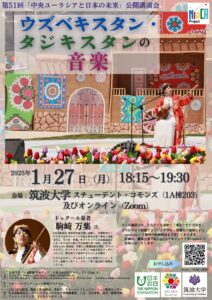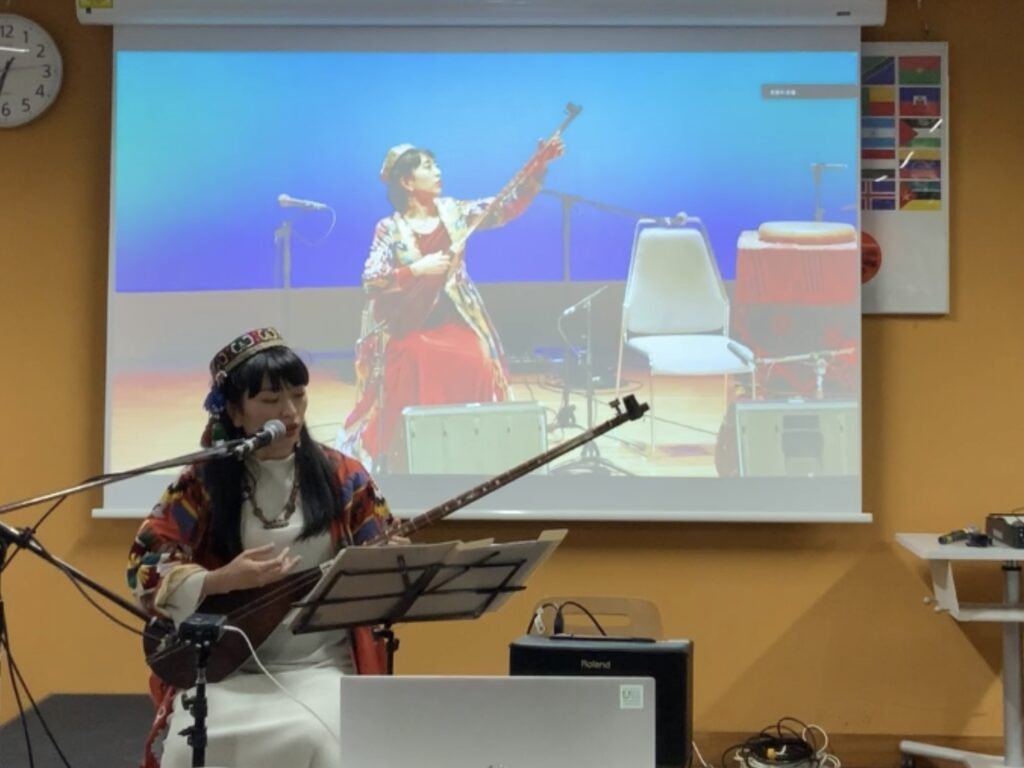On Monday, January 27, 2025, the 51st public lecture, “The Future of Central Eurasia and Japan,” was held. We invited Ms. Komazaki Mashu, a dutar player, to give a lecture entitled “Music of Uzbekistan and Tajikistan.”
In 2015, Ms. Komazaki was dispatched as a music teacher for the Japan Overseas Cooperation Volunteers in Bukhara, Uzbekistan, where she was fascinated by the sound of the Uzbek folk instrument dutar, and began learning. After returning to Japan in 2017, she began full-scale performance activities and is now recognized as one of the leading Japanese dutar player, performing at embassy events for Uzbekistan and Tajikistan, as well as in various concerts and media.
The lecture began with a live performance of a traditional dutar solo piece called “Rokhat.” After the music with a soft tone played by plucking two silk strings, a song celebrating the arrival of spring was performed with both singing and instrument playing.
Ms. Komazaki introduced us to the three main types of music that developed in the city of Bukhara where he resided: “Mavrigi,” “Shash maqom,” and “Buxorcha.” Each type of music has its own historical background and characteristics, and hearing about it, it was clear that the music of Uzbekistan and Tajikistan is a huge theme that cannot be expressed in a single word. In addition, we were able to understand that the music uses sound fluctuations and microtonal tones that cannot be written down in the score, and since it has been passed down orally, it can only be learned locally. In fact, she played three songs from “Buxorcha,” which is played by a woman at a celebration with a percussion instrument called a Doira, and a Doira solo that takes advantage of the fact that the sound differs depending on how it is played.
In addition, both on-site and online participants enjoyed a talk about music recommendations for people working in general companies in Uzbekistan, an introduction to the lively 7-beat rhythm music of Tajikistan, and a performance of a simple-sounding flute made of reeds.
During the Q&A session, various questions were asked, including inquiries about the instruments themselves and how to improve playing skills, as well as questions about the popularity and recognition of traditional music in the local area, and whether there are venues for travelers to enjoy traditional music locally. The lecture and concert concluded successfully with great enthusiasm.





